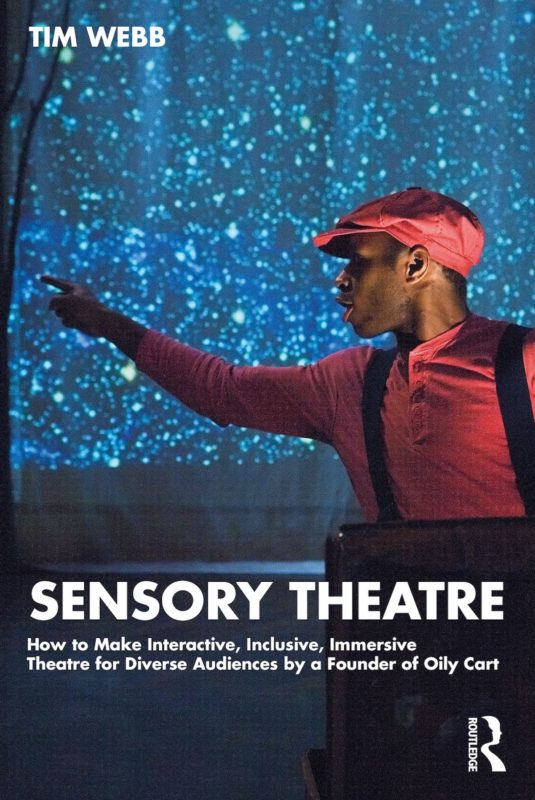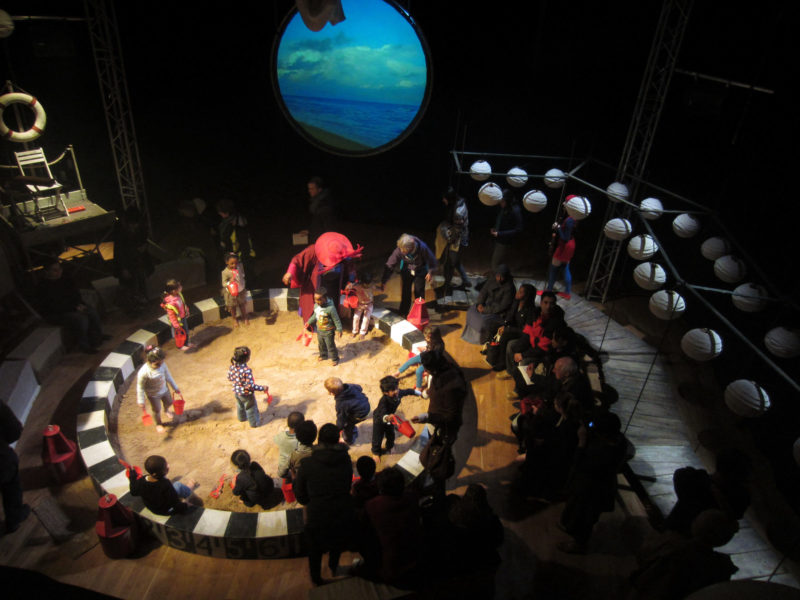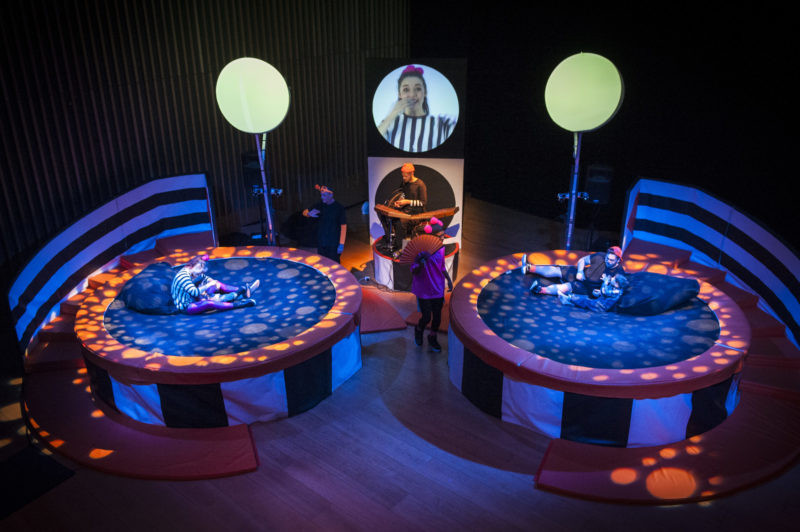Live theatre is unparalleled amongst art forms because it is live, immediate and visceral. Our art form welcomes all and invites people to go on a journey beyond their day to day lives. Since the 1980’s, Tim Webb and the UK-Based Oily Cart company have sought to create theatre that reaches audience members that have difficulty with their day to day lives beyond the ordinary, and to do so in a way that is interactive, immersive and inclusive. Many have drawn from and expanded upon this work through observation, practice and mentorship from Tim. There is now a groundbreaking book that opens the doors to all theatre practitioners to create performances especially for the very young, and for neurodivergent audiences including those on the autism spectrum. The process, purpose and practical requirements for this kind of work are given with rich examples in Tim Webb’s new book Sensory Theatre: How to Make Interactive, Inclusive and Immersive Theatre for Diverse Audiences by a founder of Oily Cart.

Blue 2006 Oily Cart. A starry, starry night. Ace, played by Mark Foster, opens his Blues Bag full of stars. Design: Claire de Loon. Photo: Patrick Baldwin.
There is now a groundbreaking book that opens the doors to all theatre practitioners to create performances especially for the very young, and for neurodivergent audiences including those on the autism spectrum.
The book covers sensory theatre intended for two different audiences: The first is a TVY (Theatre for the Very Young) audience of children under five years old. The second focuses on those with PMLD (Profound and Multiple Learning Disabilities) and audiences with Autism. PMLD is a British term which describes anything that disrupts the normal flow of information to a person through one or more senses. This can include impairments of vision or hearing, dependance upon a wheelchair or tube feeding, or neurodivergence that includes cerebral palsy and host of other conditions as often these people struggle with memory that makes a traditional narrative difficult to retain during the length of a performance. Performances for PMLD audiences and autistic audiences require different approaches, which are covered in great detail in the book.

Mr and Mrs Moon 2012 Oily Cart. Sandy played by Natasha Magigi in the giant sand pit where she and the participants all make sand castles and draw pictures together. Design: Claire de Loon. Photo: Hannah Sharp.
Sensory Theatre is broken down into three sections that each approach understanding this work. The first explores the beginnings of sensory theatre. Tim gives detailed examples of Oily Cart’s early works and lessons and principles for making sensory theatre that were discovered in the process of these foundational shows. Chapters discuss topics such as location, duration and style of performance, to more deeply understand the needs of sensory theatre’s target audience.
The second section is a practical how-to guide of what it takes to develop and devise a piece of sensory theatre. Several chapters are devoted to a deep dive of each sense and practical understandings of how a production might use any of the five basic senses, as well as considerations for some of sensory theatre’s hallmarks such as kinesthetic movement. For those unfamiliar with the work of Oily Cart and Sensory Theatre, many of these productions are aimed at small audiences, sometimes with a one-to-one ratio of performers to audience members, and they are given experiences they may not normally receive in a theatre performance such as the feeling of swinging in hammocks, swimming in hydropools, and so forth. There are further chapters outlining needs for casting, directing, rehearsing and performing sensory theatre.
The third section is an overview of sensory theatre companies across the globe including highlights such as Trusty Sidekick (co-founded by former TYA/USA Executive Director Jonathan Shmidt Chapman) which has created sensory theatre in the Lincoln Center for the Performing Arts. The section includes a breadth of companies and highlights the essential and challenging nature of creating sensory theatre across the globe. There’s also a useful appendix which highlights Oily Cart productions on YouTube and other helpful resources that can serve readers as guideposts for applying the work of sensory theatre wherever they are.

The Bounce 2014 Oily Cart. A show for young people on the Autism Spectrum or with Profound and Multiple Learning Disabilities. The set consists of two trampolines. Design: Claire de Loon. Photo: Neal Houghton.
“Theatre needs to change radically,” writes Tim Webb, “It needs to become much more Sensory Theatre, a theatre that is multisensory and interactive, that is directly responsive to the reactions of its audiences, and builds up a relationship with them as individuals.” I’ve been fortunate enough to create this work as a University of Central Florida graduate student alongside Tim and discuss it with him on my podcast (PodcastTYA). Making theatre a more inclusive place is always a radical change. Sensory Theatre is a foundational piece of changing the landscape of TYA productions and theatre on the whole.
“Theatre needs to change radically,” writes Tim Webb, “It needs to become much more Sensory Theatre, a theatre that is multisensory and interactive, that is directly responsive to the reactions of its audiences, and builds up a relationship with them as individuals.”



